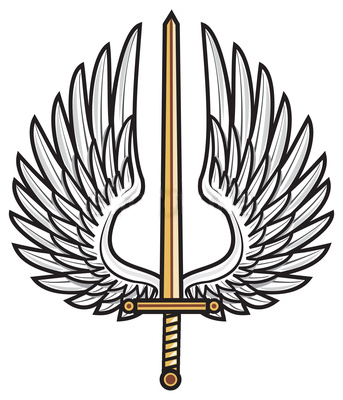Key Stage 2 SATs
KS2 SATs were overhauled to be in line with the new national curriculum in May 2016. If your child will be sitting Y6 SATs in 2019, read on for the most up-to-date information for parents.
In the summer term of 2016, children in Year 2 and Year 6 were the first to take the new SATspapers. The new-style SATs for English and maths reflect the new national curriculum, and are more rigorous than previous years' tests. There is also a completely new SATs marking scheme and grading system which has replaced national curriculum levels.
At the end of Year 6, children sit tests in:
Reading
Maths
Spelling, punctuation and grammar
These tests are both set and marked externally, and the results are used to measure the school’s performance (for example, through reporting to Ofsted and published league tables). Your child’s marks will be used in conjunction with teacher assessment to give a broader picture of their attainment.
The Reading Test
The reading test is a single paper with questions based on three passages of text. Your child will have one hour, including reading time, to complete the test.
There will be a selection of question types, including:
Ranking/ordering, e.g. ‘Number the events below to show the order in which they happen in the story’
Labelling, e.g. ‘Label the text to show the title of the story’
Find and copy, e.g. ‘Find and copy one word that suggests what the weather is like in the story’
Short constructed response, e.g. ‘What does the bear eat?’
Open-ended response, e.g. ‘Look at the sentence that begins Once upon a time. How does the writer increase the tension throughout this paragraph? Explain fully, referring to the text in your answer.’
In 2018 the Department for Education announced that the reading content of the KS2 SATs will be more closely linked to the curriculum in future to ensure children are drawing on their knowledge when answering reading comprehension questions.
The Grammar, Punctuation and Spelling Test
The grammar, punctuation and spelling test consists of two parts: a grammar and punctuation paper requiring short answers, lasting 45 minutes, and an aural spelling test of 20 words, lasting around 15 minutes.
The grammar and punctuation test will include two sub-types of questions:
Selected response, e.g. ‘Identify the adjectives in the sentence below’
Constructed response, e.g. ‘Correct/complete/rewrite the sentence below,’ or, ‘The sentence below has an apostrophe missing. Explain why it needs an apostrophe.’
The Maths Test
Children sit three papers in maths:
Paper 1: arithmetic, 30 minutes
Papers 2 and 3: reasoning, 40 minutes per paper
Paper 1 will consist of fixed response questions, where children have to give the correct answer to calculations, including long multiplication and division. Papers 2 and 3 will involve a number of question types, including:
Multiple choice
True or false
Constrained questions, e.g. giving the answer to a calculation, drawing a shape or completing a table or chart
Less constrained questions, where children will have to explain their approach for solving a problem
The Science Test
Not all children in Year 6 will take science SATs. In selected years (including 2018) a number of schools (approximately 1900) are required to take part in science sampling: a test administered to a selected sample of children thought to be representative of the population as a whole. Science sampling testing will not take place in 2019.
For those who are selected, there will be three papers:
Biology: 25 minutes, 22 marks
Chemistry: 25 minutes, 22 marks
Physics: 25 minutes, 22 marks
Each paper will take a maximum of 25 minutes to complete.
It sounds very intimidating, but these are ‘questions in a physics/chemistry/biology context’, for example:
Biology: ‘Describe the differences in the life cycle of an amphibian and a mammal’
Chemistry: ‘Group a list of materials according to whether they are solid, liquid or gas’
Physics: ‘Predict whether two magnets will attract or repel each other, based on where the poles are facing’
When will the tests take place?
The Year 6 KS2 SATs will be administered in the week commencing 13 May 2019. The timetable is likely to follow previous years' timetables:
Monday 13 May 2019
English grammar, punctuation and spelling Paper 1: questions
English grammar, punctuation and spelling Paper 2: spelling
Tuesday 14 May 2019
English reading
Wednesday 15 May 2019
Mathematics Paper 1: arithmetic
Mathematics Paper 2: reasoning
Thursday 16 May 2019
Mathematics Paper 3: reasoning
How will the papers be marked?
The previous national curriculum levels have been scrapped, and instead children are given scaled scores (read our parents' guide to primary school grading and SATs codes for more details).
You will be given your child’s scaled score and whether they have reached the expected standard set by the Department for Education (‘NS’ means that the expected standard was not achieved and ‘AS’ means the expected standard was achieved).
The range of scaled scores available for each KS2 test is:
80 (the lowest scaled score that can be awarded)
120 (the highest scaled score)
The expected standard for each test is a scaled score of 100 or more. If a child is awarded a scaled score of 99 or less they won't have achieved the expected standard in the test.
The Department for Education expects at least 65 per cent of children to reach the expected standard (the figure was initially 85 per cent but has been revised).
